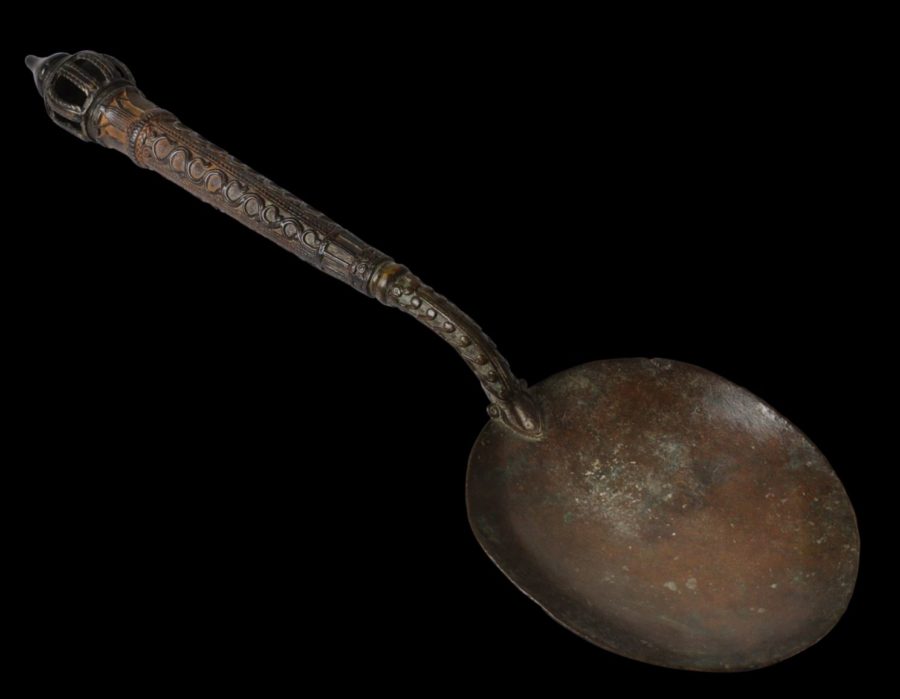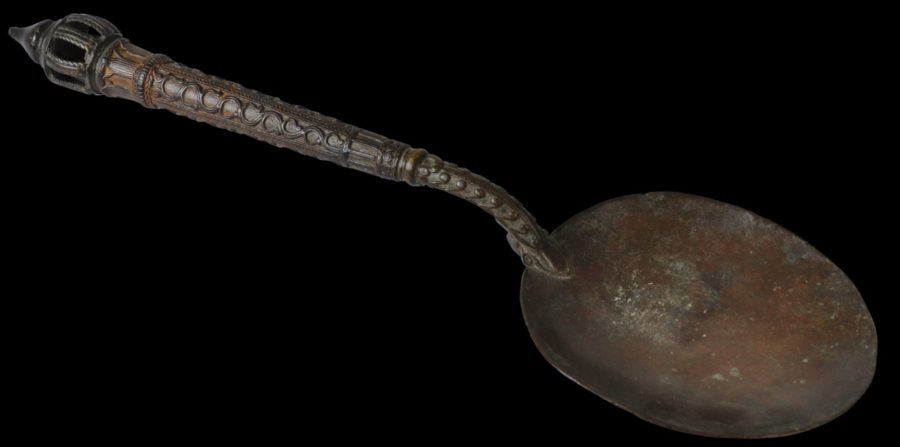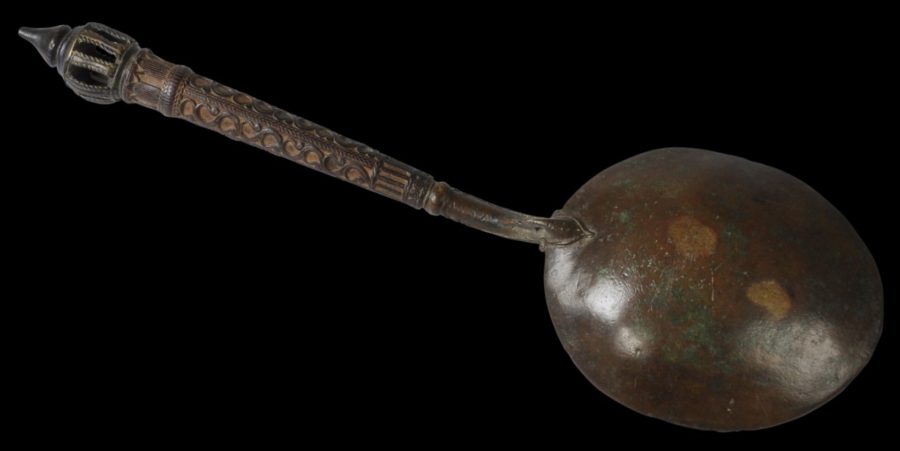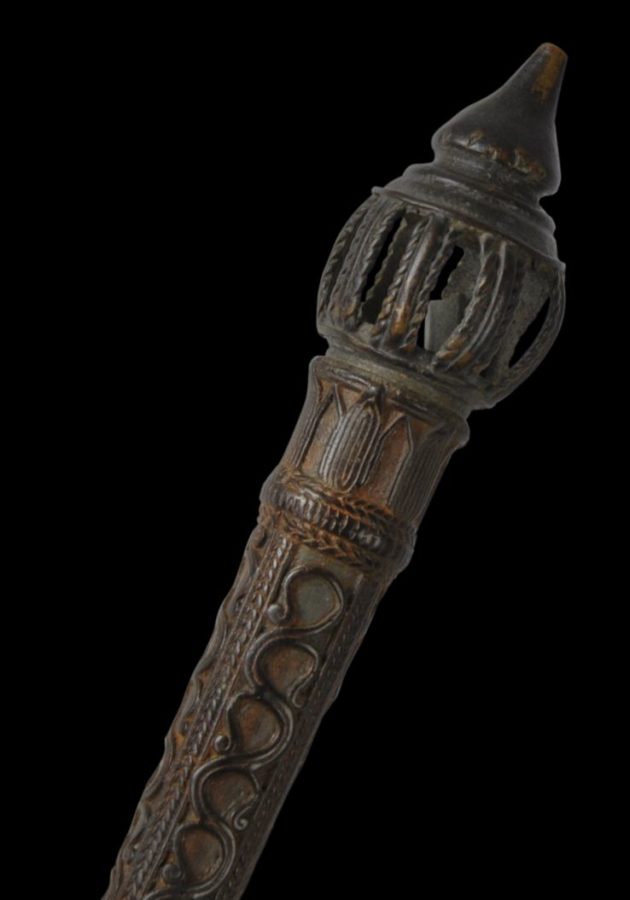This very fine ladle has been cast in bronze and then decorated with applied coil and other work. It comprises a large, wide spoon-bowl; a long, tapering handle; and a pierced, cage-like finial topped by a lotus bud end. The cage finial contains a small pebble which rattles when the ladle is used.
The handle is splendidly decorated all over with scrollwork, petal motifs and coils, all in relief and in bronze.
A related rice ladle attributed to the ‘possibly Angkor period or later’ is in the National Museum of Cambodia and illustrated in Cort & Jett (2010, p. 127). The Museum example has a plain stem handle but an almost identical cage finial.
Such a ladle made of expensive metal and with such intricate decoration replicates the more typical ladles made of wood or coconut shell, but would have been reserved for ritual use. Esoteric Buddhism that was practised at Angkor called for ritual meals to be made and presented to the gods. Specific utensils were used in these rituals and the sacred food that was prepared for the gods had to be served using temple utensils that were appropriate to the sanctity of the task ( Cort & Jett, 2010, p. 126). The ladle here would have been to serve food presented to the gods and and to distribute it to devotees thereafter.
The example here has a splendid chocolate-brown patina consistent with very significant age. It is in excellent condition and is without damage or repairs.
References
Cort, L.A. & P. Jett (eds.), Gods of Angkor, Bronzes from the National Museum of Cambodia, Smithsonian Institution, 2010.







